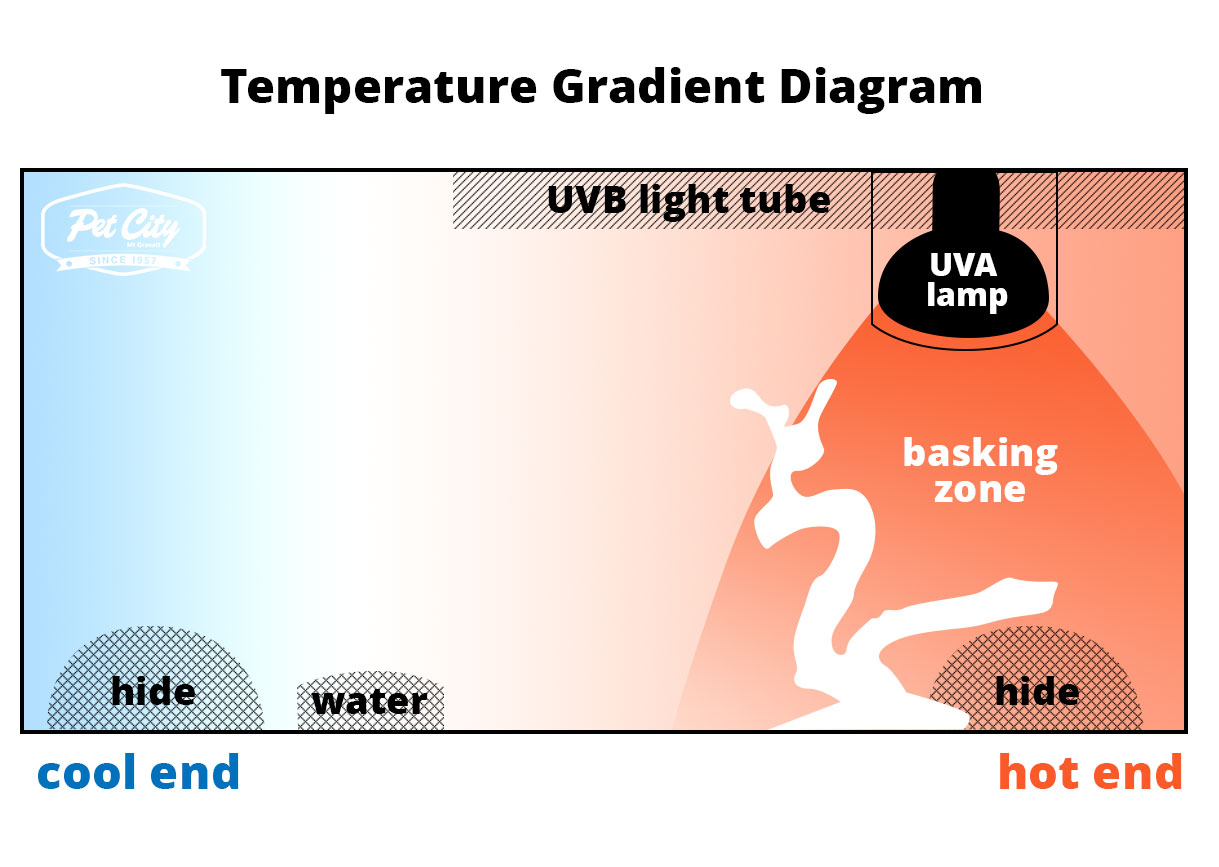Reptile Heating & Hibernation

Providing your reptiles with correct heating year round is essential to their health and wellbeing.
Each species of reptile has specific heating requirements so it is important to do your homework and ensure you are on the right path to keeping your scaly friend happy & healthy.
Preparing your Reptile's Enclosure for Winter (and in general)
Reptiles are ectothermic which means they rely on the heat in their environment to control their body temperature. They will seek refuge in cooler areas if they feel too hot and move into warmer areas when they need to increase their body temperature; this is why it is so important to set up the reptiles enclosure with a Temperature Gradient (see below)
The use of a thermostat is highly recommended to ensure you don’t over heat or under heat your reptile.
A heat source such as a globe and/or heat mat should be placed up one end of the enclosure so the reptile can freely move toward or away from the heat as necessary. This is known as thermoregulation. It is extremely important to fit the heat sources in such a way the reptiles cannot burn themselves. We do not recommend the use of heat rocks as reptiles can burn themselves quite easily. It is far safer and more effective to provide heat from overhead or under the enclosure. The use of a thermostat is highly recommended to ensure you don’t overheat or under heat your reptile.

A reptiles body temperature will impact almost every facet of their behaviour and wellbeing, including their digestive system, immune system, mental health, activity levels and has a significant role in breeding behaviour and reproduction. Failure to provide an optimum temperature range that is suitable to your reptiles species can result in stress, extreme illness and possible fatality.
What is Hibernation (aka Brumation) for a domestic reptile like?
During winter months reptiles in the wild will naturally go into a hibernation like state known as brumation. Unless you want your reptiles to breed, you may wish to make little changes to your husbandry and keep your reptile ‘awake’ year round. Keep in mind, some reptiles will often go through a “slow down” period regardless of the temperatures in their enclosure. This will be represented by inactivity and loss of appetite during the season changes. Here at Pet City we do not recommend providing a brumation period to young reptiles as they are not as strong and healthy as mature reptiles and are often more susceptible to things going wrong.
we do not recommend providing a brumation period to young reptiles
If you choose to offer a brumation period, ensure your reptile is in excellent health with good weight before making any changes to their environment. In order to avoid stress and illness it is important to make changes to their temperature and ‘day light’ slowly. Switching from high temperatures to low temperatures suddenly can be catastrophic. It is also important to reduce the amount you feed the reptile as you decrease the heat in the enclosure. The reptile’s digestive tract should be empty before entering brumation to ensure there is no undigested food left in the reptiles stomach that may decay and cause infection and illness.

Have a Question?
For more information on providing the correct and optimum temperature range for your reptile, please ask one of our friendly reptile team members.
Ask us on Facebook or Email Us








